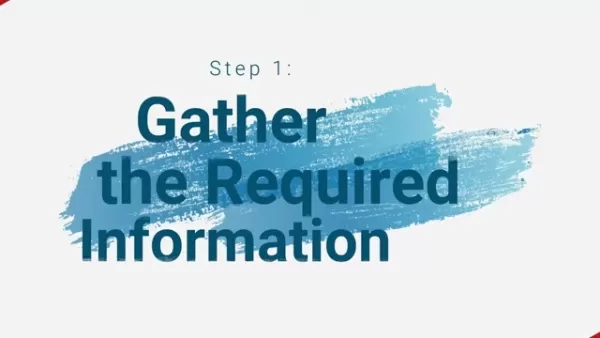Google's Gemma 3 Achieves 98% of DeepSeek's Accuracy with Just One GPU
The economics of artificial intelligence have become a major focus recently, especially with startup DeepSeek AI showcasing impressive economies of scale in using GPU chips. But Google isn't about to be outdone. On Wednesday, the tech giant unveiled its latest open-source large language model, Gemma 3, which nearly matches the accuracy of DeepSeek's R1 model, yet uses significantly less computing power.
Google measured this performance using "Elo" scores, a system commonly used in chess and sports to rank competitors. Gemma 3 scored a 1338, just shy of R1's 1363, which means R1 technically outperforms Gemma 3. However, Google estimates that it would take 32 of Nvidia's H100 GPU chips to reach R1's score, while Gemma 3 achieves its results with only one H100 GPU. Google touts this balance of compute and Elo score as the "sweet spot."
In a blog post, Google describes Gemma 3 as "the most capable model you can run on a single GPU or TPU," referring to its own custom AI chip, the "tensor processing unit." The company claims that Gemma 3 "delivers state-of-the-art performance for its size," outshining models like Llama-405B, DeepSeek-V3, and o3-mini in human preference evaluations on LMArena's leaderboard. This performance makes it easier to create engaging user experiences on a single GPU or TPU host.
 Google
Google
Google's model also surpasses Meta's Llama 3 in Elo score, which Google estimates would require 16 GPUs. It's worth noting that these figures for competing models are Google's estimates; DeepSeek AI has only disclosed using 1,814 of Nvidia's less-powerful H800 GPUs for R1.
More in-depth information can be found in a developer blog post on HuggingFace, where the Gemma 3 repository is available. Designed for on-device use rather than data centers, Gemma 3 has a significantly smaller number of parameters compared to R1 and other open-source models. With parameter counts ranging from 1 billion to 27 billion, Gemma 3 is quite modest by current standards, while R1 boasts a hefty 671 billion parameters, though it can selectively use just 37 billion.
The key to Gemma 3's efficiency is a widely used AI technique called distillation, where trained model weights from a larger model are transferred to a smaller one, enhancing its capabilities. Additionally, the distilled model undergoes three quality control measures: Reinforcement Learning from Human Feedback (RLHF), Reinforcement Learning from Machine Feedback (RLMF), and Reinforcement Learning from Execution Feedback (RLEF). These help refine the model's outputs, making them more helpful and improving its math and coding abilities.
Google's developer blog details these approaches, and another post discusses optimization techniques for the smallest 1 billion parameter model, aimed at mobile devices. These include quantization, updating key-value cache layouts, improving variable loading times, and GPU weight sharing.
Google compares Gemma 3 not only on Elo scores but also against its predecessor, Gemma 2, and its closed-source Gemini models on various benchmarks like LiveCodeBench. While Gemma 3 generally falls short of Gemini 1.5 and Gemini 2.0 in accuracy, Google notes that it "shows competitive performance compared to closed Gemini models," despite having fewer parameters.
 Google
Google
A significant upgrade in Gemma 3 over Gemma 2 is its longer "context window," expanding from 8,000 to 128,000 tokens. This allows the model to process larger texts like entire papers or books. Gemma 3 is also multi-modal, capable of handling both text and image inputs, unlike its predecessor. Additionally, it supports over 140 languages, a vast improvement over Gemma 2's English-only capabilities.
Beyond these main features, there are several other interesting aspects to Gemma 3. One issue with large language models is the potential to memorize parts of their training data, which could lead to privacy breaches. Google's researchers tested Gemma 3 for this and found it memorizes long-form text at a lower rate than its predecessors, suggesting improved privacy protection.
For those interested in the nitty-gritty, the Gemma 3 technical paper provides a thorough breakdown of the model's capabilities and development.
Related article
 Topaz DeNoise AI: Best Noise Reduction Tool in 2025 – Full Guide
In the competitive world of digital photography, image clarity remains paramount. Photographers at all skill levels contend with digital noise that compromises otherwise excellent shots. Topaz DeNoise AI emerges as a cutting-edge solution, harnessing
Topaz DeNoise AI: Best Noise Reduction Tool in 2025 – Full Guide
In the competitive world of digital photography, image clarity remains paramount. Photographers at all skill levels contend with digital noise that compromises otherwise excellent shots. Topaz DeNoise AI emerges as a cutting-edge solution, harnessing
 Master Emerald Kaizo Nuzlocke: Ultimate Survival & Strategy Guide
Emerald Kaizo stands as one of the most formidable Pokémon ROM hacks ever conceived. While attempting a Nuzlocke run exponentially increases the challenge, victory remains achievable through meticulous planning and strategic execution. This definitiv
Master Emerald Kaizo Nuzlocke: Ultimate Survival & Strategy Guide
Emerald Kaizo stands as one of the most formidable Pokémon ROM hacks ever conceived. While attempting a Nuzlocke run exponentially increases the challenge, victory remains achievable through meticulous planning and strategic execution. This definitiv
 AI-Powered Cover Letters: Expert Guide for Journal Submissions
In today's competitive academic publishing environment, crafting an effective cover letter can make the crucial difference in your manuscript's acceptance. Discover how AI-powered tools like ChatGPT can streamline this essential task, helping you cre
Comments (10)
0/200
AI-Powered Cover Letters: Expert Guide for Journal Submissions
In today's competitive academic publishing environment, crafting an effective cover letter can make the crucial difference in your manuscript's acceptance. Discover how AI-powered tools like ChatGPT can streamline this essential task, helping you cre
Comments (10)
0/200
![RonaldMartinez]() RonaldMartinez
RonaldMartinez
 August 17, 2025 at 5:00:59 AM EDT
August 17, 2025 at 5:00:59 AM EDT
Google's Gemma 3 sounds like a game-changer! 98% of DeepSeek's accuracy with just one GPU? That's some serious efficiency. Curious how this'll shake up the AI startup scene. 🚀


 0
0
![GaryJones]() GaryJones
GaryJones
 August 15, 2025 at 1:00:59 PM EDT
August 15, 2025 at 1:00:59 PM EDT
Google's Gemma 3 sounds like a game-changer! 98% of DeepSeek's accuracy with just one GPU? That's some serious efficiency. Curious how this stacks up in real-world apps! 😎


 0
0
![JonathanDavis]() JonathanDavis
JonathanDavis
 August 13, 2025 at 9:00:59 AM EDT
August 13, 2025 at 9:00:59 AM EDT
Google's Gemma 3 sounds like a game-changer! Achieving 98% of DeepSeek's accuracy with just one GPU is wild. Makes me wonder how this’ll shake up the AI race—more power to the little guys? 🤔


 0
0
![ArthurSanchez]() ArthurSanchez
ArthurSanchez
 August 4, 2025 at 9:00:59 PM EDT
August 4, 2025 at 9:00:59 PM EDT
Google's Gemma 3 sounds like a game-changer! 98% of DeepSeek's accuracy with just one GPU? That's like getting a sports car for the price of a bike! 😎 Can't wait to see how this shakes up the AI race.


 0
0
![EvelynHarris]() EvelynHarris
EvelynHarris
 August 1, 2025 at 2:08:50 AM EDT
August 1, 2025 at 2:08:50 AM EDT
Google's Gemma 3 sounds like a game-changer! 98% of DeepSeek's accuracy with just one GPU? That's some serious efficiency. Can't wait to see how devs play with this open-source gem! 😎


 0
0
![ArthurLopez]() ArthurLopez
ArthurLopez
 May 2, 2025 at 10:53:19 PM EDT
May 2, 2025 at 10:53:19 PM EDT
Google's Gemma 3 is pretty impressive, hitting 98% accuracy with just one GPU! 🤯 It's like they're showing off, but in a good way. Makes me wonder if I should switch to Google's tech for my projects. Definitely worth a try, right?


 0
0
The economics of artificial intelligence have become a major focus recently, especially with startup DeepSeek AI showcasing impressive economies of scale in using GPU chips. But Google isn't about to be outdone. On Wednesday, the tech giant unveiled its latest open-source large language model, Gemma 3, which nearly matches the accuracy of DeepSeek's R1 model, yet uses significantly less computing power.
Google measured this performance using "Elo" scores, a system commonly used in chess and sports to rank competitors. Gemma 3 scored a 1338, just shy of R1's 1363, which means R1 technically outperforms Gemma 3. However, Google estimates that it would take 32 of Nvidia's H100 GPU chips to reach R1's score, while Gemma 3 achieves its results with only one H100 GPU. Google touts this balance of compute and Elo score as the "sweet spot."
In a blog post, Google describes Gemma 3 as "the most capable model you can run on a single GPU or TPU," referring to its own custom AI chip, the "tensor processing unit." The company claims that Gemma 3 "delivers state-of-the-art performance for its size," outshining models like Llama-405B, DeepSeek-V3, and o3-mini in human preference evaluations on LMArena's leaderboard. This performance makes it easier to create engaging user experiences on a single GPU or TPU host.

Google's model also surpasses Meta's Llama 3 in Elo score, which Google estimates would require 16 GPUs. It's worth noting that these figures for competing models are Google's estimates; DeepSeek AI has only disclosed using 1,814 of Nvidia's less-powerful H800 GPUs for R1.
More in-depth information can be found in a developer blog post on HuggingFace, where the Gemma 3 repository is available. Designed for on-device use rather than data centers, Gemma 3 has a significantly smaller number of parameters compared to R1 and other open-source models. With parameter counts ranging from 1 billion to 27 billion, Gemma 3 is quite modest by current standards, while R1 boasts a hefty 671 billion parameters, though it can selectively use just 37 billion.
The key to Gemma 3's efficiency is a widely used AI technique called distillation, where trained model weights from a larger model are transferred to a smaller one, enhancing its capabilities. Additionally, the distilled model undergoes three quality control measures: Reinforcement Learning from Human Feedback (RLHF), Reinforcement Learning from Machine Feedback (RLMF), and Reinforcement Learning from Execution Feedback (RLEF). These help refine the model's outputs, making them more helpful and improving its math and coding abilities.
Google's developer blog details these approaches, and another post discusses optimization techniques for the smallest 1 billion parameter model, aimed at mobile devices. These include quantization, updating key-value cache layouts, improving variable loading times, and GPU weight sharing.
Google compares Gemma 3 not only on Elo scores but also against its predecessor, Gemma 2, and its closed-source Gemini models on various benchmarks like LiveCodeBench. While Gemma 3 generally falls short of Gemini 1.5 and Gemini 2.0 in accuracy, Google notes that it "shows competitive performance compared to closed Gemini models," despite having fewer parameters.

A significant upgrade in Gemma 3 over Gemma 2 is its longer "context window," expanding from 8,000 to 128,000 tokens. This allows the model to process larger texts like entire papers or books. Gemma 3 is also multi-modal, capable of handling both text and image inputs, unlike its predecessor. Additionally, it supports over 140 languages, a vast improvement over Gemma 2's English-only capabilities.
Beyond these main features, there are several other interesting aspects to Gemma 3. One issue with large language models is the potential to memorize parts of their training data, which could lead to privacy breaches. Google's researchers tested Gemma 3 for this and found it memorizes long-form text at a lower rate than its predecessors, suggesting improved privacy protection.
For those interested in the nitty-gritty, the Gemma 3 technical paper provides a thorough breakdown of the model's capabilities and development.
 Topaz DeNoise AI: Best Noise Reduction Tool in 2025 – Full Guide
In the competitive world of digital photography, image clarity remains paramount. Photographers at all skill levels contend with digital noise that compromises otherwise excellent shots. Topaz DeNoise AI emerges as a cutting-edge solution, harnessing
Topaz DeNoise AI: Best Noise Reduction Tool in 2025 – Full Guide
In the competitive world of digital photography, image clarity remains paramount. Photographers at all skill levels contend with digital noise that compromises otherwise excellent shots. Topaz DeNoise AI emerges as a cutting-edge solution, harnessing
 Master Emerald Kaizo Nuzlocke: Ultimate Survival & Strategy Guide
Emerald Kaizo stands as one of the most formidable Pokémon ROM hacks ever conceived. While attempting a Nuzlocke run exponentially increases the challenge, victory remains achievable through meticulous planning and strategic execution. This definitiv
Master Emerald Kaizo Nuzlocke: Ultimate Survival & Strategy Guide
Emerald Kaizo stands as one of the most formidable Pokémon ROM hacks ever conceived. While attempting a Nuzlocke run exponentially increases the challenge, victory remains achievable through meticulous planning and strategic execution. This definitiv
 AI-Powered Cover Letters: Expert Guide for Journal Submissions
In today's competitive academic publishing environment, crafting an effective cover letter can make the crucial difference in your manuscript's acceptance. Discover how AI-powered tools like ChatGPT can streamline this essential task, helping you cre
AI-Powered Cover Letters: Expert Guide for Journal Submissions
In today's competitive academic publishing environment, crafting an effective cover letter can make the crucial difference in your manuscript's acceptance. Discover how AI-powered tools like ChatGPT can streamline this essential task, helping you cre
 August 17, 2025 at 5:00:59 AM EDT
August 17, 2025 at 5:00:59 AM EDT
Google's Gemma 3 sounds like a game-changer! 98% of DeepSeek's accuracy with just one GPU? That's some serious efficiency. Curious how this'll shake up the AI startup scene. 🚀


 0
0
 August 15, 2025 at 1:00:59 PM EDT
August 15, 2025 at 1:00:59 PM EDT
Google's Gemma 3 sounds like a game-changer! 98% of DeepSeek's accuracy with just one GPU? That's some serious efficiency. Curious how this stacks up in real-world apps! 😎


 0
0
 August 13, 2025 at 9:00:59 AM EDT
August 13, 2025 at 9:00:59 AM EDT
Google's Gemma 3 sounds like a game-changer! Achieving 98% of DeepSeek's accuracy with just one GPU is wild. Makes me wonder how this’ll shake up the AI race—more power to the little guys? 🤔


 0
0
 August 4, 2025 at 9:00:59 PM EDT
August 4, 2025 at 9:00:59 PM EDT
Google's Gemma 3 sounds like a game-changer! 98% of DeepSeek's accuracy with just one GPU? That's like getting a sports car for the price of a bike! 😎 Can't wait to see how this shakes up the AI race.


 0
0
 August 1, 2025 at 2:08:50 AM EDT
August 1, 2025 at 2:08:50 AM EDT
Google's Gemma 3 sounds like a game-changer! 98% of DeepSeek's accuracy with just one GPU? That's some serious efficiency. Can't wait to see how devs play with this open-source gem! 😎


 0
0
 May 2, 2025 at 10:53:19 PM EDT
May 2, 2025 at 10:53:19 PM EDT
Google's Gemma 3 is pretty impressive, hitting 98% accuracy with just one GPU! 🤯 It's like they're showing off, but in a good way. Makes me wonder if I should switch to Google's tech for my projects. Definitely worth a try, right?


 0
0





























